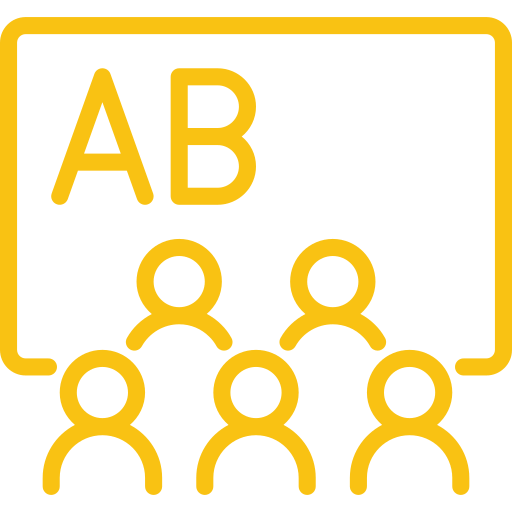Check out these effective tips for classroom management.
By Shawn Bean, president of MTI, Social studies teacher since 1999
Throwing things. Ignoring you. Arguing with each other. Fighting. The list goes on and on. Disruptive behavior is the national pastime for some of our more challenging students.
More than ever, teachers are faced with an onslaught of inappropriate behavior in their classrooms. And it doesn’t matter if you are a savvy veteran or a new teacher. There will always be difficult students, and they’ll always find new ways to throw off your classroom routines.
Sure things change a little from grade level to grade level, but at the end of the day it can often be one of the biggest challenges any teacher will face in their career.
And unfortunately, too little time in teacher preparation programs is spent on classroom management practices, and rarely is it covered in professional development.
So we’ve put together a list of classroom management tips from some of the most effective classroom managers we know. It’s entirely possible that you won’t use all these, everyone has a different teaching style and will face different situations.
But the more tricks in your bag, the more prepared you are to handle new situations. Everyone take a deep breath, and let’s go!
Build Parent Support
Getting the parents on your side can make the whole school year much easier. Good classroom management means putting out fires before they start whenever possible, and getting the adults at home on your side is important.
1. Make a positive contact home before you make a negative one: This one’s kind of self-explanatory, but it is an important aspect of a successful classroom. If you want the parents on your side, find something early on in your class to send them about their kid. It softens the blow for later, and it positions you as more than just the classroom cop, always picking on their kid.
2. Continue to contact home for all the students (not just the bad ones): Positive relationships are built when parents see you as allies in their child’s lives. Parents are used to seeing any message from school as negative, so they are pleasantly surprised when they get good news.
I always tell people in their first year of teaching to send out an email to every parent at least once a quarter, at minimum giving them an update on how their own student is doing in class.
Worst case scenario, use the sandwich method: start with something good, add the negative, end on a good note.
3. Set classroom expectations for their kids: Yes you’ll send a syllabus home for the parents to see. That’s the content.
I also think you need to include social behaviors that you’ll be teaching: things like leadership skills and cooperation for example. Hard skills are important, but I always recommend including soft skills as well in your correspondence.
4. Return emails and phone calls promptly: Any list of teacher actions that lead to parental support has to include this one.
You absolutely can disconnect when at home; that’s reasonable. It’s also expected that you’ll get back to them though within 24 hours on a workday.
It’s a balance, though; if you’re too worked up, you should take a few deep breaths first and let yourself calm down before responding.
Individual Students
Once you have the parents on your side, it’s time to come up with some ideas to deal with student behavior for individual students.
You don’t get paid extra to write referrals, and eventually you’ll have your superiors asking what exactly goes on in your classroom. So use a few of these ideas to help keep a positive classroom environment.
5. Understand cultural differences: In some cultures it’s considered rude to make direct eye contact, in others to look away.
6. Build strong relationships: Effective teaching requires you to put forth your best efforts to get to know your kids. If you don’t care about them, odds are they don’t care what you are talking about. If the only options you exercise are standing in front of the class or sitting at your desk, you’ll probably come across as standoffish.
From the first day of school to the last, try to make connections with your students. Be real about it, and if you dig deep enough you’ll find something in common.
7. Create individual positive behavior contracts: Classroom rules can be enough for the majority of your students to not act up during class time, but there will always be a few students demonstrating inappropriate behavior.
Consider creating a plan that you develop with the student, highlighting what is expected and what the benefit is for them following the plan.
Be careful with the rewards, you have to balance what you give them to what you do for all the other students who are already behaving. That can also have an impact on your classroom culture.
8. Positive reinforcement: Regardless of whether you create a behavior contract or not, it’s important to give the right amount of positive reinforcement. If you are positive all the time, you’re more their cheerleader than their teacher. Feedback needs to be positive when they’re on the right path, but constructive when they aren’t doing what you expect them to do.
9. Differentiated lesson plans: Poor student behavior often has less to do with students wanting to create problems, but more to do with a fear of appearing dumb in front of their peers. Creating different levels of work that allow students to demonstrate success is an effective way to make sure they cannot be embarrassed.
10. Practice forgiveness: Any time I have issues with individuals, I make sure students understand that I don’t hold grudges. We won’t always get along, but part of being the adult in the room is to move forward and give them chances to fail and fix their own behaviors.
Whole Class
Part of effective classroom management is to set up how the class should behave and what the expectations are for the entire class.
Personally, I’m not big on having a long list of rules, and when I’ve been forced to do that I’ve had some of my least productive classrooms.
I believe in expectations more than rules, and I keep my rules to a minimum for that reason.
11. Model good behavior: Good class managers don’t just tell students how to act, they demonstrate it in how they act on a daily basis.
At the start of the school year, make sure the students understand that you are trying to teach them how to act in a professional setting (obviously the older the student, the more this impacts them). You don’t have to have an authoritative classroom management style, but there are things that are appropriate and things that are inappropriate for class.
As an example, if you believe it’s important to arrive at class on time, but you are late coming in to start the class each day, you’re not exactly reinforcing what you are teaching.
12. Be authentic: Grade school, middle school, high school, at any age kids can smell a fake. Things will go wrong in class, there will be things you don’t know the answer to, technology at some point will fail.
Yes you need a backup plan, but just be real with them about whatever is happening. You are teaching them one of the most important aspects in life, how to deal with things when they don’t go your way.
13. Build great hooks: Part of being a teacher is being an entertainer, or a good storyteller. And this always starts with building some anticipation. You don’t have to sing or dance, unless that’s part of your wide variety of skills.
Sometimes it’s enough just to get them to think on their own and form an opinion. However you decide to hook them, it’s an important factor in how much they pay attention, and thus a building block in your classroom management plan.
14. Encourage creativity: Many teachers think best practices for assignments are to lay out every single step required. If this is all you do, then the students will only give you exact copies of what you ask of them. It may be an appropriate style for some of your students, but often you’ll have students who do better when they think outside the box.
At the end of the day, it depends on what type of future worker you are trying to build, those that can think for themselves or those who just follow directions all the time.
15. Focus on transitions: Any time students are switching from one activity to another, have a clear set of expectations. This could mean coming into your room, going from one class assignment to another, or at the end of the class period.
If you don’t fill the time with effective strategies, some students will look to fill it with poor behavior. Some of the best classroom teachers I’ve seen greet their students at the door with a question of the day, which they need to get right to enter the room.
16. Develop a daily routine: The best way to keep students under control is to have things that happen on a daily basis (or at least weekly). This includes putting a rough outline for the day on the board, and trying whenever possible to keep a schedule that is consistent.
In my class that means podcast Fridays, and they know it every Friday they show up. My at-risk students always struggle when it gets moved to podcast Thursday or Monday, it just feels wrong.
17. Incorporate collaborative learning: Let’s face it, students need to learn how to work with others. And recent years have made this even tougher, as more kids go into their own shells.
Working together helps them with building relationships, as well as group problem solving. A great way to ensure that everyone is contributing is to have each student outline their contribution to the team.
18. Avoid punishing the entire class: It can happen, but usually it shouldn’t. And in any room there are groups of teachers that will tell you it works. But effective management means punishing those who are violating your class rules.
It’s hard for a student to have a positive attitude when they know that other groups of students in class will be getting them in trouble. Don’t expect your students to be good classroom managers themselves, especially if the adult in the room is struggling once the bell rings.
19. Allow time for fun: All work and no play can be a tough sell for today’s students. You can also trick them into learning while playing. The key here is to not just play the same game that all the other teachers around you are using, as that will just burn them out quicker, making it less fun.
And it doesn’t have to be an entire period. Sometimes the best conversations are when you open it up to topics the students want to talk about, even if it’s not your subject or content area. It’s okay to be human, and to show them you have a life outside of the school.
20. Encourage student choice: Anytime you give students a choice, you increase the odds of getting buy in for an assignment. Not saying it should be for every assignment, but at least in each unit.
Physical Space
Although this one is extremely important, it’s also the one that many teachers have the least amount of control over.
For example, sometimes teachers have to move from room to room during the day, often sharing rooms with other teachers. That can’t be helped.
But here’s a few ideas to throw out for you, because the actual space you teach in does impact how your teaching is received.
21. Create the right classroom setting: Sometimes a positive classroom environment starts with the way the room is set up. This isn’t always something you can control, based on the layout of the room and the types of desks you have available.
But if it’s possible, consider round tables to encourage group work. Or a mix of tables and chairs, so some kids can do independent work while others are learning cooperatively.
Think about it like this: if you are a student sitting in the front of the classroom that is just rows of desks, you can barely see any of the other students in class. That already makes you feel less like you are part of something, and more like you are an individual punching the clock.
22. Tone down the posters: Seriously, no more than around 5. You have students who can’t handle having an overload of things to look at. It’s also a red flag when a teacher has tons of rules posted all over the classroom. It means they most likely have poor classroom management, and they think posting the rules will make students follow them.
Behavior management doesn’t happen because you post a sign, otherwise there’d be no speeding tickets.
23. Encourage student input: When it is applicable, consider involving the students in decorating the room. This incorporates a level of trust into the classroom culture, something you have to have for a positive classroom culture.
24. Move the room location: Sometimes you can’t help it, I once taught in a room with no windows for over a decade. The lack of sunlight can really make it tough to have a sunny disposition.
So from time to time we’d have class in the atrium, or the hallway that had the biggest windows, or even outside. Do what you can with what you can.
25. Create (or look for) open space: If you can create space in your room, that’s great. Now use it! Get them up and move around, otherwise they’ll be quicker to tune you out. And like I’ve said before, students not paying attention will usually lead to students not behaving.
Final Thoughts
The most effective teachers know that student learning can’t happen without student engagement. Find a teacher that has good classroom management strategies, and you’ll find a learning environment built to ensure student achievement. Of course, that’s just one step in developing your classroom management strategy, but it is an important one.
The importance of classroom management is something that is often underestimated, and it takes more than a list of clear rules and expected behaviors.
Teaching is an art form, and like all great artists you’ll have to figure out what each student, and class, needs to be successful.
At MTI, we’re also here to help teachers with professional learning opportunities. In most cases, we’ll choose a classroom management book and build the course to help you come up with your own classroom management techniques. You’ll also find other options throughout the website to help you in your teaching journey.
To continue to work on your classroom management skills, we developed several courses that can help you have fewer discipline problems. Just click here to see the graduate courses that we’ve developed in collaboration with our university partners.
Also, we encourage you to share this free resource, and others on our classroom management page, with others that are looking for classroom management approaches. After all, MTI has always been about teachers helping teachers. And part of that is to continue your teacher education outside of your bachelor’s and master’s degree.
We hope you’ve enjoyed our article on 25 Effective Teacher Classroom Management Tips. Visit our Teacher’s Helping Teacher’s blog for more content for teachers.

























